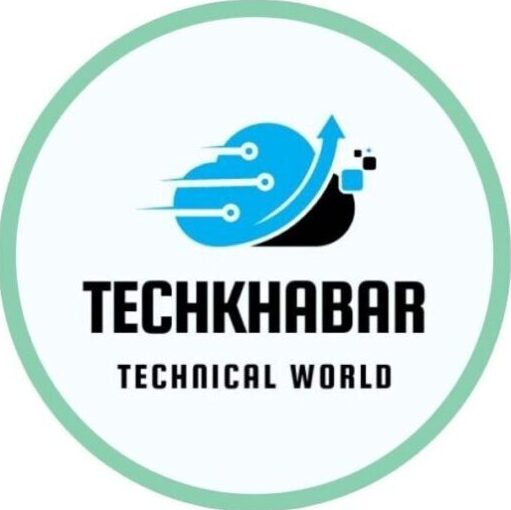Unlocking the Future: Exploring 21st Century Cloud Computing and Its New Applications
Introduction
“Unlocking the Future: Exploring 21st Century Cloud Computing and Its New Applications” In the ever-evolving landscape of technology, one concept stands out as a cornerstone of innovation: cloud computing. From its humble beginnings to its current role as a catalyst for digital transformation, cloud computing has reshaped the way businesses operate and individuals engage with technology. As we step into the 21st century, the potential of cloud computing seems boundless, with new applications emerging across various industries. In this comprehensive exploration, we delve into the future of cloud computing, unveiling its transformative power and the novel applications that are reshaping our world.
The Evolution of Cloud Computing

To understand the future of cloud computing, it’s essential to trace its evolution. The concept of cloud computing emerged in the early 2000s, offering a paradigm shift from traditional IT infrastructure. Instead of relying on physical servers and hardware, cloud computing leverages a network of remote servers to store, manage, and process data over the internet. This shift not only revolutionized the way businesses approach IT but also democratized access to computing resources, enabling scalability, flexibility, and cost-efficiency on a global scale. exploring Unlocking the Future: Exploring 21st Century Cloud Computing and Its New Applications.
Unlocking the Future: Exploring 21st Century Cloud Computing and Its New Applications
Cloud Computing in the 21st Century: A Paradigm Shift
As we enter the 21st century, Exploring Unlocking the Future: Exploring 21st Century Cloud Computing and Its New Applications, cloud computing is undergoing a profound transformation. No longer confined to backend infrastructure and data storage, cloud computing is becoming synonymous with innovation and agility. Organizations are harnessing the power of the cloud to drive digital initiatives, accelerate time-to-market, and gain a competitive edge in today’s fast-paced economy. From startups to enterprise giants, cloud computing has become the cornerstone of modern IT infrastructure, enabling businesses to scale effortlessly, adapt to changing market dynamics, and deliver seamless user experiences.
Emerging Trends in Cloud Computing
The future of cloud computing is brimming with promise, fueled by emerging trends that are reshaping the technological landscape. Unlocking the Future: Exploring 21st Century Cloud Computing and Its New Applications, One such trend is the rise of edge computing, which extends the capabilities of the cloud to the edge of the network, enabling real-time processing and analysis of data closer to the source. This paradigm shift is particularly relevant in scenarios requiring low latency and high bandwidth, such as IoT applications, autonomous vehicles, and immersive gaming experiences. By distributing computing resources across the network, edge computing promises to unlock new levels of efficiency, responsiveness, and scalability in the cloud ecosystem.

Another transformative trend is the convergence of cloud computing and artificial intelligence (AI). As AI algorithms become increasingly sophisticated, organizations are leveraging the power of the cloud to train, deploy, and scale AI models at scale. Whether it’s natural language processing, computer vision, or predictive analytics, cloud-based AI platforms offer a flexible and scalable infrastructure for driving innovation and unlocking new possibilities in virtually every industry. From personalized recommendations to predictive maintenance, AI-powered cloud services are revolutionizing the way businesses harness data to drive insights and deliver value to customers.Unlocking the Future: Exploring 21st Century Cloud Computing and Its New Applications
Moreover, cloud-native technologies such as containers and serverless computing are gaining traction, offering developers unprecedented levels of agility and scalability in building and deploying applications. By abstracting away the underlying infrastructure and automating resource management, containers and serverless platforms enable developers to focus on writing code and delivering value, without worrying about the complexities of infrastructure management. This shift towards cloud-native architectures is driving a fundamental change in how applications are built, deployed, and operated, paving the way for faster innovation cycles and more efficient resource utilization. Unlocking the Future: Exploring 21st Century Cloud Computing and Its New Applications.
Benefits of Cloud Computing
Exploring Unlocking the Future: Exploring 21st Century Cloud Computing and Its New Applications, the benefits of Cloud Computing, organization are turning to cloud computing services due to following benefits
- Scalability: Cloud computing offers unparalleled scalability, allowing businesses to effortlessly adjust their computing resources to meet fluctuating demands. Whether scaling up to accommodate increased workload or scaling down during periods of low activity, cloud services provide the flexibility needed to optimize resource utilization and cost-efficiency.
- Cost-Efficiency: By eliminating the need for upfront hardware investment and reducing ongoing maintenance costs, cloud computing offers significant cost savings for businesses of all sizes. With pay-as-you-go pricing models, organizations only pay for the resources they consume, enabling them to allocate their IT budget more effectively and avoid unnecessary expenses.
- Flexibility and Accessibility: Cloud computing enables anytime, anywhere access to computing resources, applications, and data. Whether accessing workloads from a desktop computer, laptop, or mobile device, users can collaborate seamlessly and stay productive, regardless of their location. This flexibility empowers businesses to support remote work initiatives, enhance employee productivity, and improve overall agility.
- Disaster Recovery and Business Continuity: Cloud computing provides robust disaster recovery and business continuity solutions, ensuring that critical data and applications are protected against unexpected disruptions. By leveraging redundant infrastructure, automated backup mechanisms, and geo-replication capabilities, organizations can minimize downtime, mitigate risks, and maintain operational continuity in the face of disasters or outages.
- Enhanced Security: Cloud computing platforms offer advanced security features and compliance certifications to protect sensitive data and mitigate cyber security risks. With built-in encryption, identity and access management controls, and threat detection capabilities, cloud providers help organizations safeguard their infrastructure, applications, and information assets against unauthorized access, data breaches, and other security threats.
- Agility and Innovation: Cloud computing accelerates innovation by providing instant access to a broad range of cutting-edge technologies and services. From artificial intelligence and machine learning to Internet of Things (IoT) and big data analytics, cloud platforms empower businesses to experiment, iterate, and deploy new solutions rapidly, accelerating digital transformation and obtaining a market advantage.
- Environmental Sustainability: Cloud computing promotes environmental sustainability by optimizing resource utilization, reducing energy consumption, and minimizing carbon emissions. By consolidating workloads onto shared infrastructure and leveraging energy-efficient data centers, cloud providers can achieve economies of scale and operate more sustainably compared to traditional on-premises environments. This commitment to sustainability aligns with corporate social responsibility goals and helps organizations reduce their environmental footprint while maximizing efficiency and performance.
The Future of Cloud Computing: New Applications on the Horizon

Looking ahead, the future of cloud computing is brimming with possibilities, with new applications emerging across various industries. In healthcare, cloud-based telemedicine platforms are revolutionizing patient care, enabling remote consultations, real-time monitoring, and personalized treatment plans. By leveraging the power of the cloud, healthcare providers can deliver high-quality care to patients regardless of their geographic location, improving access to healthcare services and driving better health outcomes. Unlocking the Future: Exploring 21st Century Cloud Computing and Its New Applications
In the retail sector, cloud computing is powering the next generation of e-commerce experiences, from personalized recommendations to frictionless checkout processes. By analyzing vast amounts of customer data in real-time, retailers can gain valuable insights into consumer behavior, preferences, and trends, enabling them to deliver targeted offers and personalized shopping experiences. Moreover, cloud-based inventory management systems enable retailers to optimize their supply chain operations, reduce costs, and improve inventory accuracy, ensuring that products are available when and where customers need them.
Unlocking the Future: Exploring 21st Century Cloud Computing and Its New Applications exploring In the manufacturing industry, cloud computing is driving the fourth industrial revolution, also known as Industry 4.0. By connecting machines, sensors, and devices to the cloud, manufacturers can create smart factories that optimize production processes, minimize downtime, and enhance quality control. From predictive maintenance to real-time monitoring, cloud-based manufacturing solutions enable manufacturers to gain actionable insights into their operations, improve efficiency, and drive innovation across the value chain.
Conclusion
In conclusion, the future of cloud computing is bright, with new applications emerging across various industries, Unlocking the Future: Exploring 21st Century Cloud Computing and Its New Applications , reshaping the way we live, work, and interact with technology. From edge computing to AI-powered insights, cloud-native architectures to transformative applications in healthcare, retail, and manufacturing, the possibilities are endless. As we navigate the complexities of the digital age, one thing is clear: cloud computing will continue to be a driving force for innovation, empowering organizations to unlock new opportunities, spur expansion and influence the direction of technology.
FAQ
Q.1- What is cloud computing in simple words?
ANS- In order to provide speedier innovation, flexible resources, and economies of scale, cloud computing is simply the distribution of computing services including servers, storage, databases, networking, software, analytics, and intelligence over the Internet (also known as “the cloud”).
Q.2- Why is cloud computing with example?
ANS- What Does Cloud Computing Look Like? Both people and enterprises employ a variety of cloud computing applications, such as music and video streaming services where the media assets are really stored offsite. Platforms for storing data such as Box, Drop box, One Drive, and Google Drive .
Q.3- Is cloud computing easy?
ANS- The skill set required for cloud computing is complicated and often takes two to four years to master. The degree of one’s comfort with networks, operating systems, and cloud settings determines a lot of the timing.
Q.4- Why do we need cloud?
ANS- It provides easy online access to servers, networks, storage, development tools, and apps. Cloud service providers take on the responsibility of equipment, training, and infrastructure upkeep in place of large capital expenditures.
Q.5- Is Gmail cloud computing?
ANS- IaaS, PaaS, and SaaS, or infrastructure, platform, and software as a service, are the three main categories of cloud computing. An online email service, such as Gmail, is a basic illustration of SaaS. One SaaS cloud computing service is Gmail.

